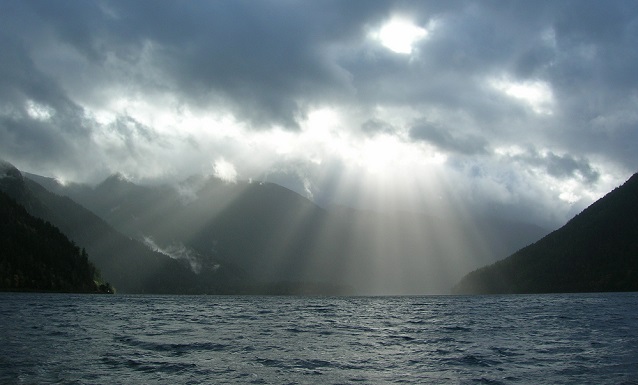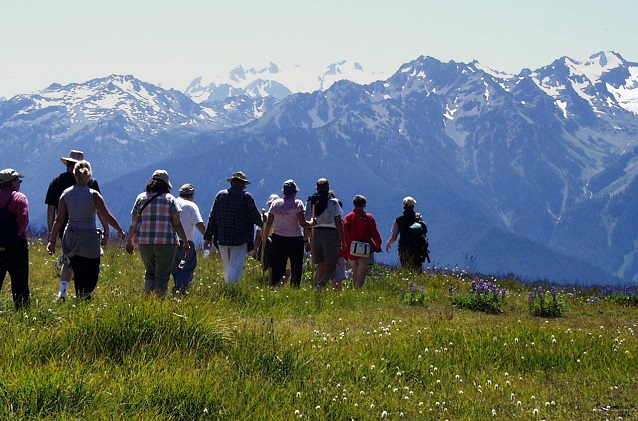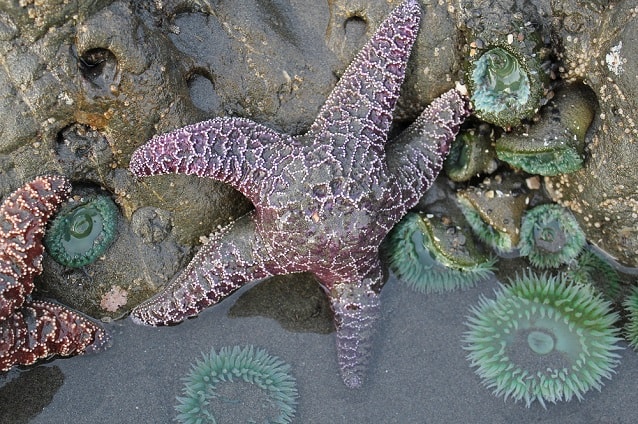Pebbles clatter as an ocean wave recedes from the shore. The plop of raindrops is softened by layers of thick moss and lichen that cover the trees, rocks, and ground of the rain forest. High in a mountain meadow on a sunny July day, all is quiet but the hum of bees as they move from flower to flower. A stunning variety of sights, sounds, and experiences beckon visitors to Olympic National Park.
In the far northwest corner of Washington, the park protects a varied landscape and three distinctly different ecosystems—wild Pacific coast, valleys of ancient forests and rushing rivers, and rocky, glacier-capped peaks. Paved and gravel roads provide access to the park’s major destinations, but the heart of the park is wilderness. More than 600 miles of trail offer opportunities to slow down and experience its beauty and solitude.

NPS Photo
Much of the park’s diversity can be credited to its steep and rugged terrain and proximity to the ocean. Mount Olympus, the highest peak, is 7,980 feet above sea level and only 33 miles from the ocean. It and the rest of the mountains stand as a barrier to wind and weather, intercepting moisture-laden clouds that blow in from the Pacific. As a result, the western slopes of the park gather huge amounts of precipitation that support temperate rain forests in the valleys and glaciers on the highest peaks.
As the clouds spill their rain and snow over the mountains, relatively little moisture is left by the time they reach the north and east sides of the park. Consequently, these areas are much dryer, creating a marked difference in the look and feel of the landscape as you travel east.

NPS Photo
Twelve to 14 feet of rain fall every year on the west-facing valleys of the Hoh, Queets, and Quinault rivers. These valleys harbor some of the world’s best remaining examples of temperate rain forest, with ferns and moss draping ancient, towering trees. Room to grow is at a premium in these forests, and every surface is covered with plant life. A visitor center at the Hoh Rain Forest offers a good starting point for exploring the rain forests.
Glaciers crown the park’s highest peaks and even at lower elevations, winter snows can persist late into summer. Hurricane Ridge, at 5,242 feet, offers both stunning views of glacier-capped peaks, including Mount Olympus, and the chance to look for late-summer snowbanks among the subalpine meadows and forests. The Hurricane Ridge Visitor Center has exhibits and an information desk, and trails lead into the surrounding meadows and up nearby ridges.

NPS Photo
The park protects over 70 miles of wild Pacific coast, with sandy beaches; rocky, boulder-strewn shorelines; and sheer cliffs that drop to the ocean. Along the coast’s intertidal zone, the Olympic Coast National Marine Sanctuary overlaps with Olympic National Park and extends 25–50 miles offshore, protecting the marine environment that borders the land.
Olympic National Park offers a multitude of ways to find your park—come visit and find your own special experience here!
Last updated: June 30, 2016
